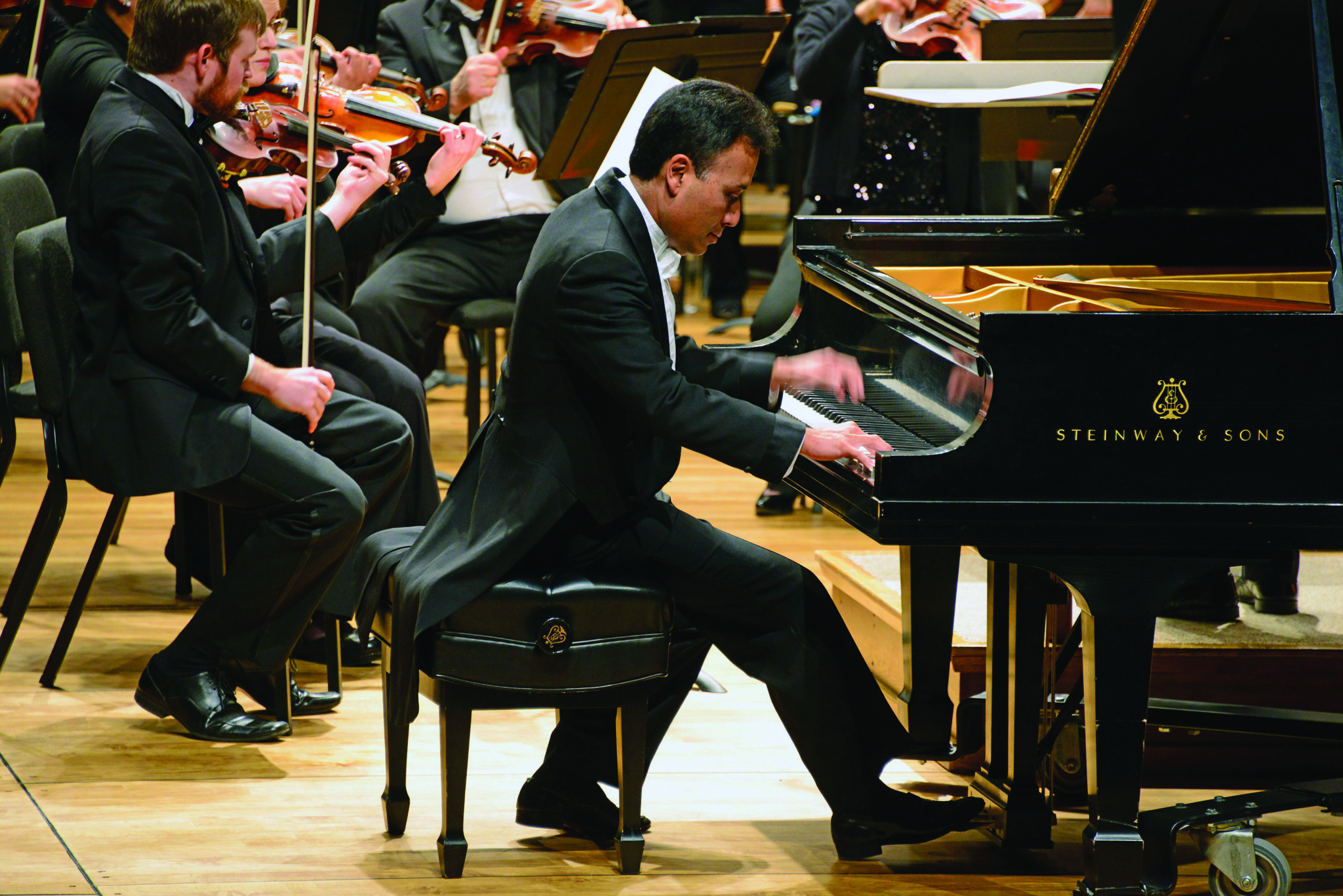By Stephanie Powell
After 16 seasons with the Marin Symphony, music director Alasdair Neale wants concertgoers to know that the 2016-17 season offers a “varied diet,” with works from celebrated contemporary composer John Adams to standard repertoire showpieces. During his tenure with the symphony, the intrepid conductor reflects on his taste: “I imagine it has broadened,” he says, “but I’m still very attracted to the idea of presenting great masterpieces,” and of course, audience favorites.
“It reinforces the idea that all arts are constantly evolving,” Neale says of programming both standard and contemporary works. “We’re not museum exhibits, and while it’s important to present music that has stood the test of time, there’s a lot of great music out there that is hot off the presses—even Beethoven’s fifth piano concerto was new music at one time.”
The season’s four Masterwork programs, which kick off on October 30 with pianist Jon Nakamatsu’s performance of Beethoven’s powerhouse Piano Concerto No. 5, each tie together with a virtuosic piece for orchestra, Neale says. “They are very hard to play and are designed to show off the orchestra at its most athletic and expressive,” he adds.
The Masterworks 1: Bold Beginnings program places Beethoven’s Piano Concerto No. 5, also known as the Emperor Concerto, between John Adams 1986’s Short Ride in a Fast Machine and late-Romantic Rachmaninoff’s Symphonic Dances.
“Giving the [audience] something that they really love like the Emperor Concerto is a draw, and for performers, I have to say, we love playing it,” Nakamatsu says. This will be Nakamatsu’s third time performing with the Marin Symphony, a gig he particularly enjoys as he, too, calls the Bay Area home (he resides in San Jose).
“It’s been performed since the early 1800s and it’s developed its own performance traditions,” he says of the concerto, and adds that Beethoven was blind and nearly deaf when he composed it. “And that coupled with our knowledge of the period, instruments and style—we take that into account in how we ultimately interpret or present a work. We also must remember that we are playing modern instruments in bigger halls with more sound that Beethoven could have ever imagined.”
The symphony’s 64th season continues with its annual Holiday Pops Concert, a performance complete with pop classics and traditional holiday carols. Masterworks 2: Midori Comes to Marin! starts off strong, on January 27, 2017, with electro-symphonic mastermind Mason Bates’ blues-infused rollercoaster Devil’s Radio. Next, former-child-prodigy-turned-iconic-violinist Midori will perform Britten’s Violin Concerto, a challenging work that requires unwavering technique, with the symphony. She will also teach and perform with the Marin Symphony Youth Orchestra, who she named as the sole recipient of her acclaimed Midori Orchestra Residency Program.
“That’s a real testament to the regard of the organization,” Neale says of the opportunity. “It presents a tremendous opportunity to rub shoulders with one of the greatest violinists in the world.” A violinist he considers “immensely thoughtful and sensitive” with those who she’s teaching.
Masterworks 3: Songs of Destiny returns on March 5, with the Marin Symphony Chorus presenting two works by Brahms—Nänie and Schicksalslied, and finishes with Elgar’s classic Symphony No. 1, better known as “Pomp and Circumstance.” The season concludes on April 9, with a Masterwork 4 performance of Mahler’s Symphony No. 5.
“I would hope that [the audience] gets two things out of the next season above all,” Neale says. “One is an appreciation for just how many wonderful places classical music can take you to—how many different states of minds you can experience when you’re listening to these wonderful pieces. The other is just what a treasure we have in Marin with our orchestra.”
The Marin Symphony performs at the Marin Center, 10 Avenue of the Flags, San Rafael; 415/473-6800; marinsymphony.org.








